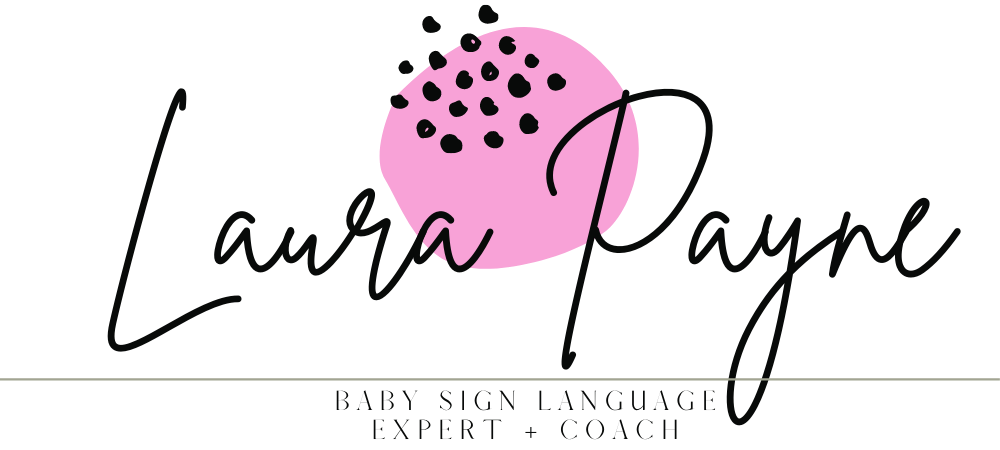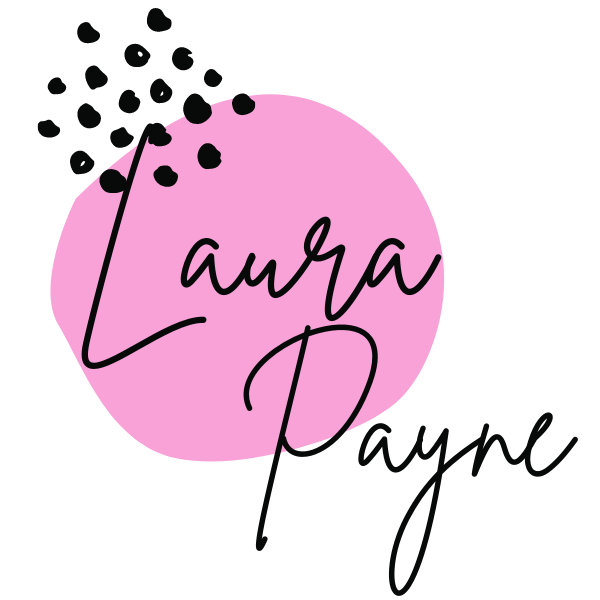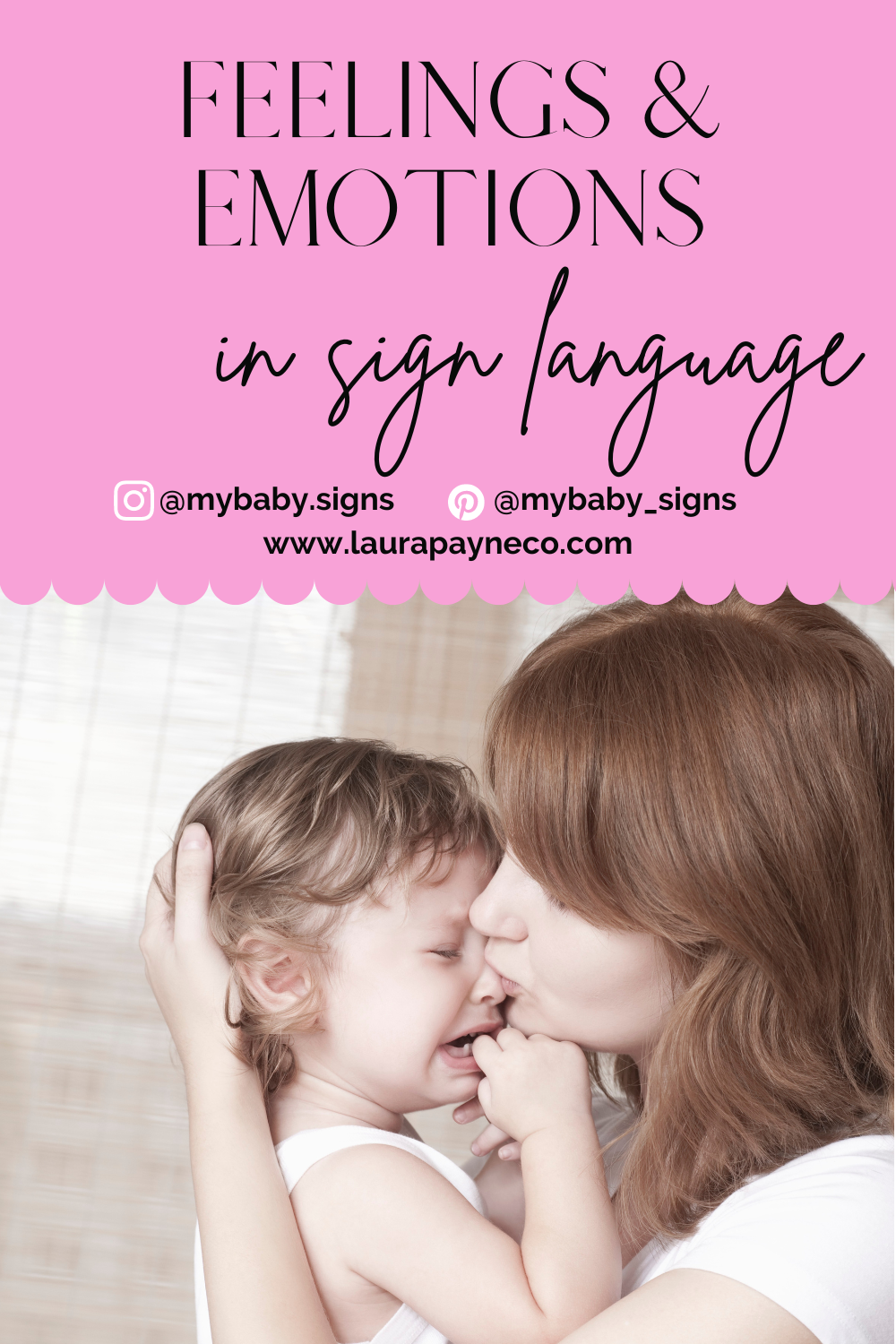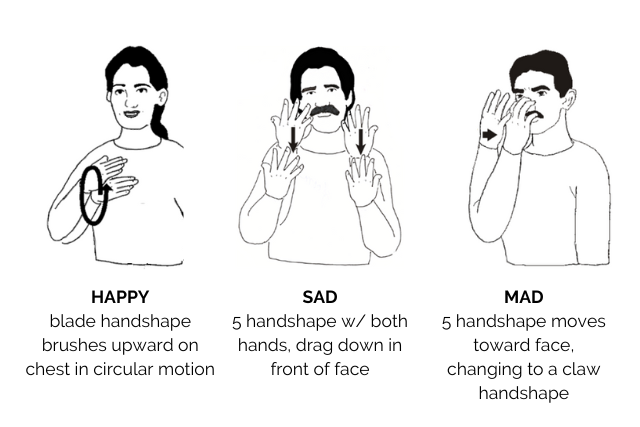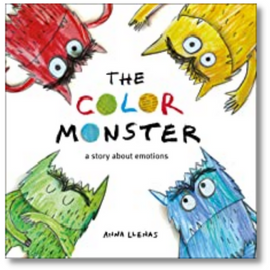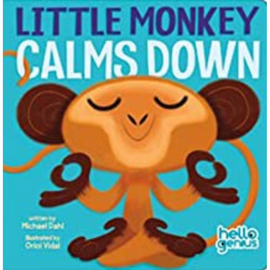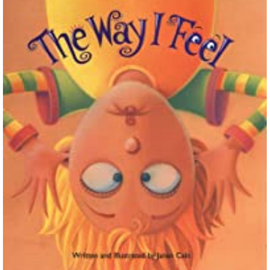Feelings & Emotions in Sign Language
this post may contain affiliate links
The range of emotions and feelings in toddlers swings back and forth multiple times a day. One moment they are playing calmly, and the next they are in tears because too many puzzle pieces are upside down. As a parent, it’s a lot to endure. However, talking about feelings and emotions with your baby and toddler is ever so important. Their little body and brain is going through so many changes at rapid speed, it's hard to process, navigate, and understand. Have you ever thought to use sign language for feelings and emotions to support these conversations?
In this blog post, you will learn why sign language benefits our babies, toddlers, and preschoolers when they are becoming upset, frustrated, or feeling any range of emotion. You’ll also learn a few feelings in ASL, my favorite books to read with your child to support these conversations and language topics, as well as activity ideas to continue the conversations.
If you don’t already, please follow me on Instagram for more about how sign language can be a game charger for your baby / toddler’s early communication skills.
Sign Language for Temper Tantrums
When your toddler is having a meltdown or tantrum, rather than trying to talk them through it, try using sign language so they can better respond and process everything.
Sign language not only can help reduce the feelings of frustration (which can then lead to tantrums), but it can also help your child process, communicate, and recover from a meltdown, tantrum, or moment of high emotions.
When you use ASL signs during a meltdown or tantrum:
The signs and techniques help them “wake up” from the flood of emotions they are experiencing.
They are able to recover from severe tantrums more quickly.
Their meltdowns are less likely to result in a tantrum.
Afterwards, you are able to continue using sign language to help transition to repairing your connection.
Want to use sign language with your little one?
Tantrums + Sign Language is a pre-recorded mini-course on how to effectively implement sign language during your child's tantrums for faster recoveries. You will learn how to best navigate the imbalance in your child’s brain using ASL signs and proven strategies so you can get back to making memories, laughing, and playing in record time. Learn more here.
Look Who’s Signing Now is my signature four part course that teaches you the exact blueprint I use to teach my own children sign language. Beginning with the foundation of why and when to use baby sign language, how to implement it, and what signs to use. With this self-study e-course, you will have the confidence to sign with your baby and boost their early communication while reducing frustrations, tantrums, and time wasted playing the guessing game.
Check out my online resources for parents! Browse my current offerings.
Feelings in Sign Language
HAPPY: this sign may also be two handed, and is a great one to also use when singing “When You’re Happy And You Know It!”
SAD: it’s important for your face to match the emotion, so be sure to also look sad when signing this
MAD: this is also the sign for angry… make sure to show a mad face, too!
Books about feelings & emotions for toddlers
Using books + sign language about your toddler's feelings & emotions help them learn how to identify, navigate, and recover from the variety of emotions they experience every day.
I encourage you to integrate books on this topic into your book rotation often, so your toddler has frequent exposure to be able to process when they are calm and receptive to more conversations.
The Color Monster is a great book for littles 12 months and over and follows the monster as he sorts his feelings by color. It’s a great board book to start those early associations about feelings.
Little Monkey Calms Down provides steps to help young toddlers calm down. Establishing a routine to help them calm down after experiencing many emotions is very beneficial, and this book provides those steps in a simple story line.
The Way I Feel is available as both a board book and paperback. This book helps preschoolers identify their feelings and emotions and make connections to the story using the actions and behaviors described on each page. The conversations you can have using this book are endless!
To see additional books to use sign language for feelings, please see my Amazon storefront.
Activities About Feelings & Emotions for Babies, Toddlers, and Preschoolers
These ASL signs can also be used during activities related to feelings and emotions. They will help your child make further connections about feelings and some can also be used after they settle down after becoming upset to process the feelings they experienced. Here are a few ideas to get you started:
@mothercould shared these Tubes of Emotions, which would be a wonderful activity for toddlers and preschoolers, plus it adds some exciting science that every young child always loves!
Playdough is so versatile and has endless opportunities to bring in emotions and feelings. My favorite playdough makers are Oat What Fun and Capptivating Play. You can make faces on playdough mats (there are many to choose from on Etsy, like this book version), and also use these emotion rolling pins.
Using a mirror can also be great to discuss and explore facial expressions. Babies love to explore faces at a very early age, and toddlers can really benefit from the discussions of what feelings look like on the outside.
For more resources and information about this topic, I highly recommend The Happiest Toddler on the Block (and if you can, get it when your baby is around 10 months old... my hindsight understands why they recommend that in the first chapter). My husband and I have referred back to it many times after we each read it.
Cheers to more social emotional awareness, fewer meltdowns, and faster recoveries!
